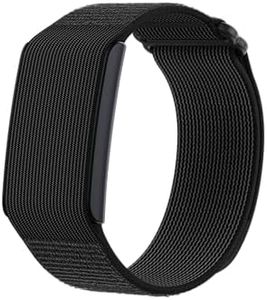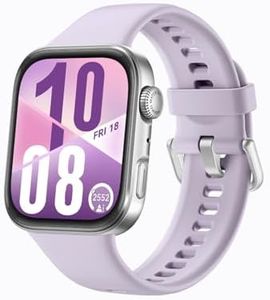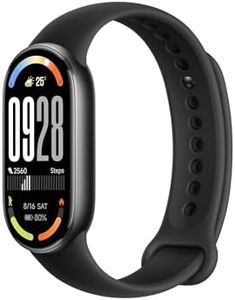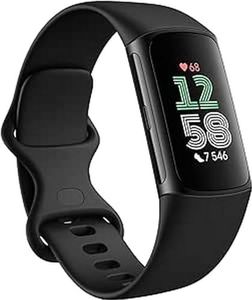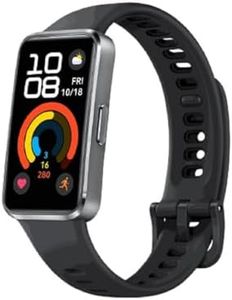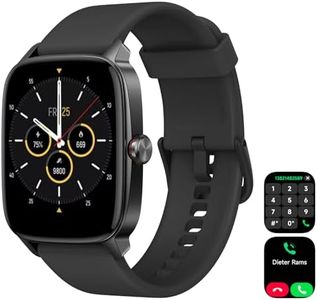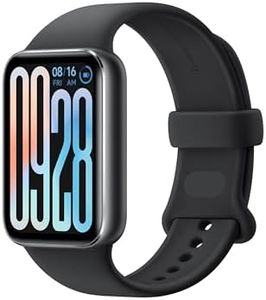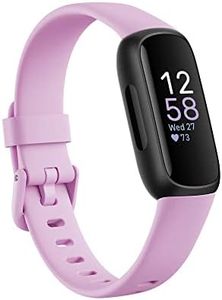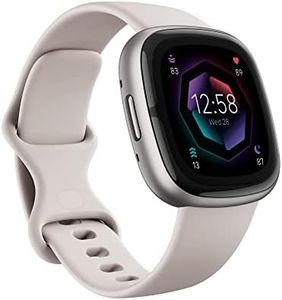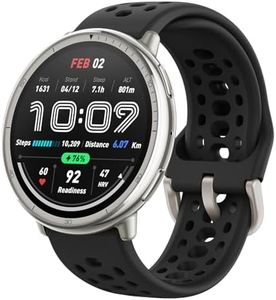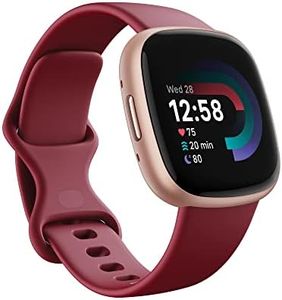We Use CookiesWe use cookies to enhance the security, performance,
functionality and for analytical and promotional activities. By continuing to browse this site you
are agreeing to our privacy policy
10 Best fitbits
From leading brands and best sellers available on the web.Buying Guide for the Best fitbits
When choosing a Fitbit or any fitness tracker, the key is to match its features with your lifestyle, activity level, and health goals. Whether you're looking to get basic step counts or want advanced health tracking, the best Fitbit for you should fit comfortably, capture the data you care about, and be easy to use daily. By understanding how each feature serves you, you'll feel more motivated and satisfied with your choice.Display Type and SizeThe display is how you interact with your Fitbit. Some models use simple LED or monochrome screens, while others have colorful, touch-sensitive displays. A larger, brighter display makes it easier to view stats and notifications, but may make the device bigger on your wrist. Simpler, smaller screens are more discreet and tend to consume less battery. If you want to use your Fitbit as a watch, check messages, or want easier navigation, a bigger display helps. If you just want activity tracking and don't care much about seeing a lot on the screen, a small, basic display or even no display might suit you best.
Activity and Health Tracking FeaturesMost Fitbits track steps, distance, and calories, but advanced models add heart rate monitoring, sleep stages, blood oxygen, stress tracking, skin temperature, and even ECG. If keeping tabs on your heart health, sleep patterns, or stress is important to you, look for these extra features. For people mainly interested in movement and daily step goals, the basics will be enough. Consider your health priorities: if you want detailed insights and specific health data, go for a model with richer sensors; if you're starting out, basic activity tracking is an easy place to begin.
Battery LifeBattery life determines how often you'll need to charge your Fitbit. Simpler models can last up to a week or more, while those with bright screens and extra features may need recharging more often. If you dislike charging your devices frequently, or travel a lot, longer battery life is more convenient. If you’re okay with charging every couple of days and want a feature-rich experience, shorter battery life won’t be much of an issue.
Water ResistanceWater resistance determines if you can wear your Fitbit in the shower, while swimming, or during heavy sweating. Basic splash or sweat resistance is enough for casual use, while full swim-proof models are better if you swim often, forget to remove your tracker, or want peace of mind against rain and splashes.
GPS TrackingGPS lets you map your route during walks, runs, or bike rides without your phone. Some Fitbits have built-in GPS, while others use your phone’s GPS when nearby. If you want accurate routes and exercise stats independently from your phone, look for built-in GPS. If you always carry your phone during workouts, connected GPS is fine and keeps the device lighter.
Band Comfort and StyleSince you’ll wear your Fitbit often, comfort and style matter. Some Fitbits have important design differences: slim versus chunky, silicone versus fabric, and color choices. Think about your daily activities—if you want something subtle or fashionable, look for customizable and comfortable bands. For all-day and night wear, lightweight and hypoallergenic bands make a difference.
Smart FeaturesSome Fitbits offer extras like smartphone notifications, music control, contactless payments, and voice assistants. These perks add convenience but might not be necessary for everyone. If you want a tracker to double as a mini smartwatch or make your daily life more connected, prioritize these features. If fitness is your only concern, you can ignore them.
